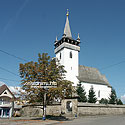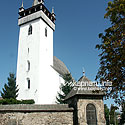Ukraine
Transcarpathian
Khust district
Khust
Worth seeing
Worth seeing in Khust
-
Church of St. Elizabeth
The church is one of the most prominent sights in Khust. It was built in early XV c. and now carries typical defensive features and elements of the Gothic style. They are lancet windows and counterforts. The high gothic bell-tower has a hip roof, reconstructed in XVIII c. An ancient wall painting has preserved in the interior, it dates back to XV c. It was recovered during the last restoration of the church in 2004-2005.Address: Khust town, Karpatska Sich St., 20 -
The ruins of the fortress rise over the city on the hill (174 m) of volcanic origin. They began to built the stone fortress for defense of the salt road in 1090. The construction of the fortress lasted over a century. It was finished in 1191. For some period in XIV c. the fortress was a property of knight Drah, the ancestor of Vlad Tsepesh, widely known as Prince Drakula. The rise of Khust town is directly connected with the construction of the fortress. It was an impregnable fortress, still destroyed by the lightning in 1766.Address: Khust
-
Synagogue
The Synagogue dates back to the middle of XIX c. It has practically never interrupted its activities. The wall paintings have preserved inside the Temple.Address: Khust town, Nezalezhnist Sq., 11 -
Valley of daffodils
Це унікальний ботанічний об'єкт, в якому охороняється найбільший у Середній Європі осередок нарцису вузьколистого, який у 1980 році був занесений до Червоної книги України. Розташований на висоті 180–200 м в урочищі Кіреші, за 4 км від міста Khust Закарпатської області. Площа 256,5 га — це найбільша площа, яку займають дикорослі нарциси в Європі. З 1992 р. належить до Карпатського біосферного заповідника. Загалом у "Долині нарцисів" представлено 498 видів різних рослин, зокрема 15 видів квітів, які занесені до Червоної книги України, 16 видів орхідей. Цвітіння в "Долині нарцисів" зазвичай починається у першій половині травня та триває близько двох тижнів.Address: Khust

 Ukraine
Ukraine Poland
Poland Slovakia
Slovakia
 Українською
Українською






